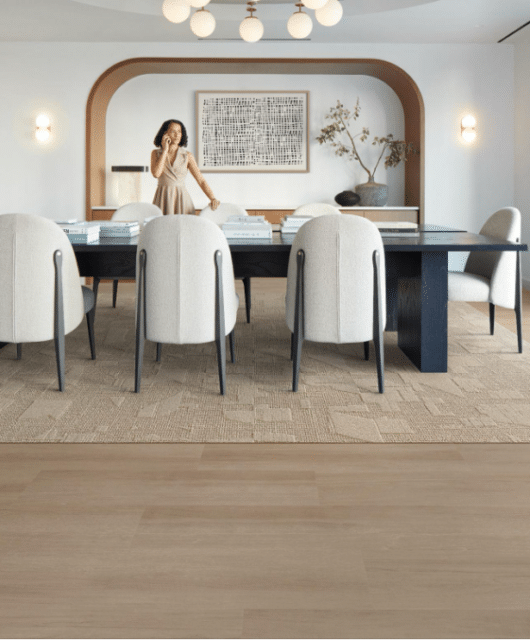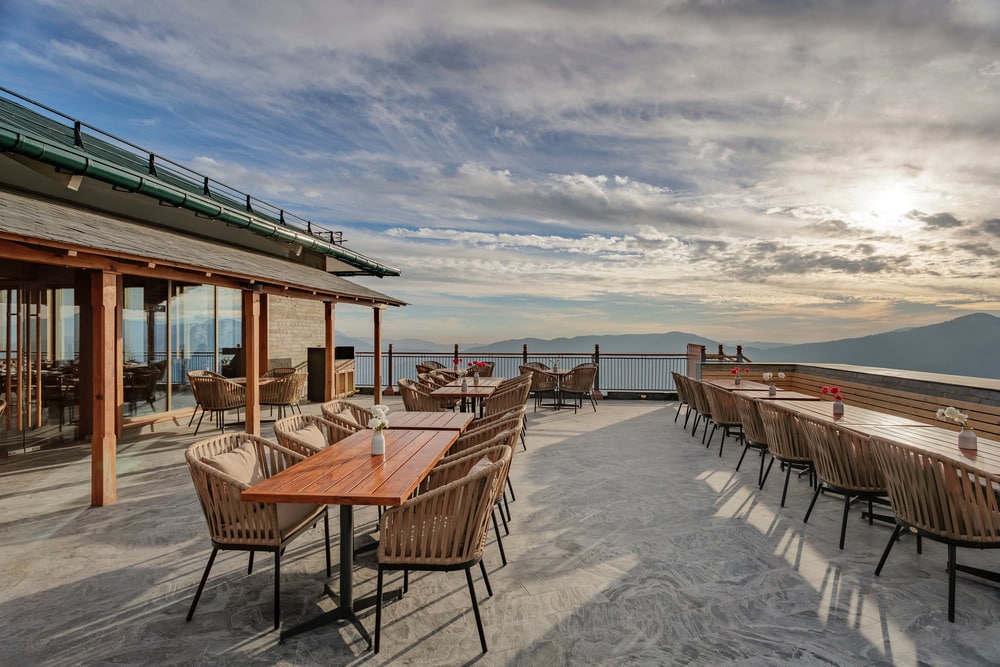 Taj Theog is a 90-key, luxury resort that sits on a cliff on the periphery of Theog, a remote Himalayan town in the northern Indian state of Himachal Pradesh. The project marks the Taj Hotels’ first hospitality venture in Himachal Pradesh and had a clear mandate to marry the region’s rich cultural heritage with world-class amenities to offer guests a service-oriented environment with a profound local connect. Studio Lotus was brought on board by Pradeep Sachdeva Design Associates (PSDA), the architects on the project, to design its public spaces with the aim of bringing in the distinct warmth and intimacy of a mountain home to the hospitality experience.
Taj Theog is a 90-key, luxury resort that sits on a cliff on the periphery of Theog, a remote Himalayan town in the northern Indian state of Himachal Pradesh. The project marks the Taj Hotels’ first hospitality venture in Himachal Pradesh and had a clear mandate to marry the region’s rich cultural heritage with world-class amenities to offer guests a service-oriented environment with a profound local connect. Studio Lotus was brought on board by Pradeep Sachdeva Design Associates (PSDA), the architects on the project, to design its public spaces with the aim of bringing in the distinct warmth and intimacy of a mountain home to the hospitality experience.
Consisted of the brief, the studio has employed a light material palette of locally-sourced timber and stone to create a quiet and restrained spatial experience. Handcrafted elements from the vernacular lexicon are contemporised and incorporated to evoke traditional spatial gestures associated with hospitality and home-like warmth.
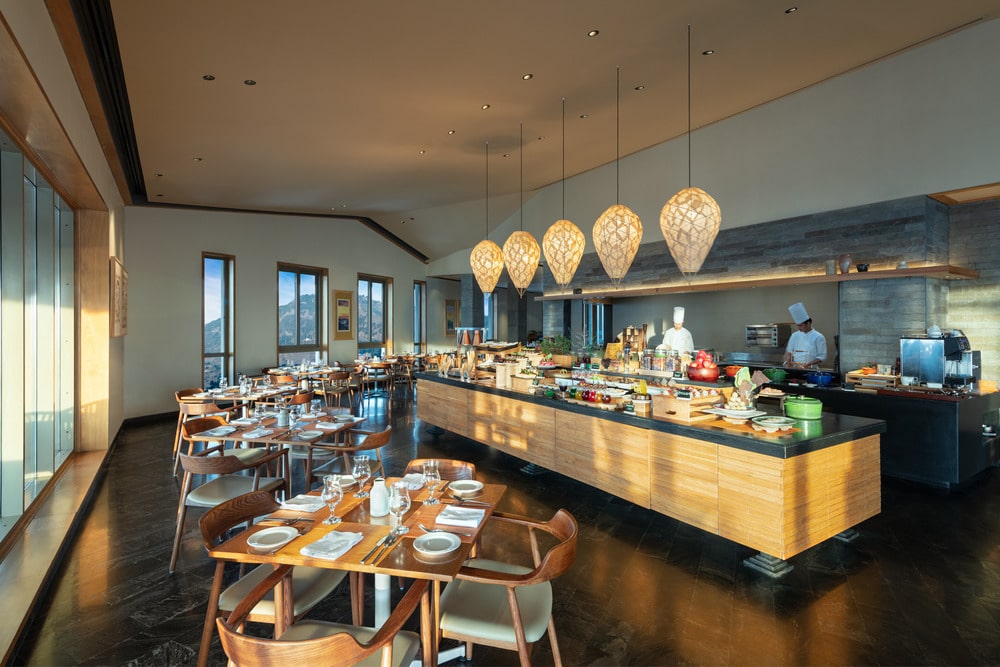 For instance, the prime showcase for this approach, the hotel lobby, features rows of timber spindles suspended on metal screens to recreate the welcoming gesture of Himachali homes in a modern format, as well as to break the large expanse of space into smaller, intimate pockets. The scale of the space is further modulated through the use of locally-sourced pinewood and slate, as well as intricate geometric patterns in the tiles and wooden paneling, both of which add visual density to the interiors.
For instance, the prime showcase for this approach, the hotel lobby, features rows of timber spindles suspended on metal screens to recreate the welcoming gesture of Himachali homes in a modern format, as well as to break the large expanse of space into smaller, intimate pockets. The scale of the space is further modulated through the use of locally-sourced pinewood and slate, as well as intricate geometric patterns in the tiles and wooden paneling, both of which add visual density to the interiors.
The resort, spread across three levels, comprises zones characterised by specific elements to create a distinct identity. For instance, local slate and Budhpura stone are used within the all-day dining space to create a muted foil for the panoramic views of the Theog valley. In contrast, the wide floor span and low-hung roof of the bar are utilised to create a train carriage-like atmosphere, inspired by colonial-era railway dining cars. For the specialty restaurant, the sculptural expression of the wall cladding draws inspiration from Asian influences as well as the traditions of earthenware in the region.
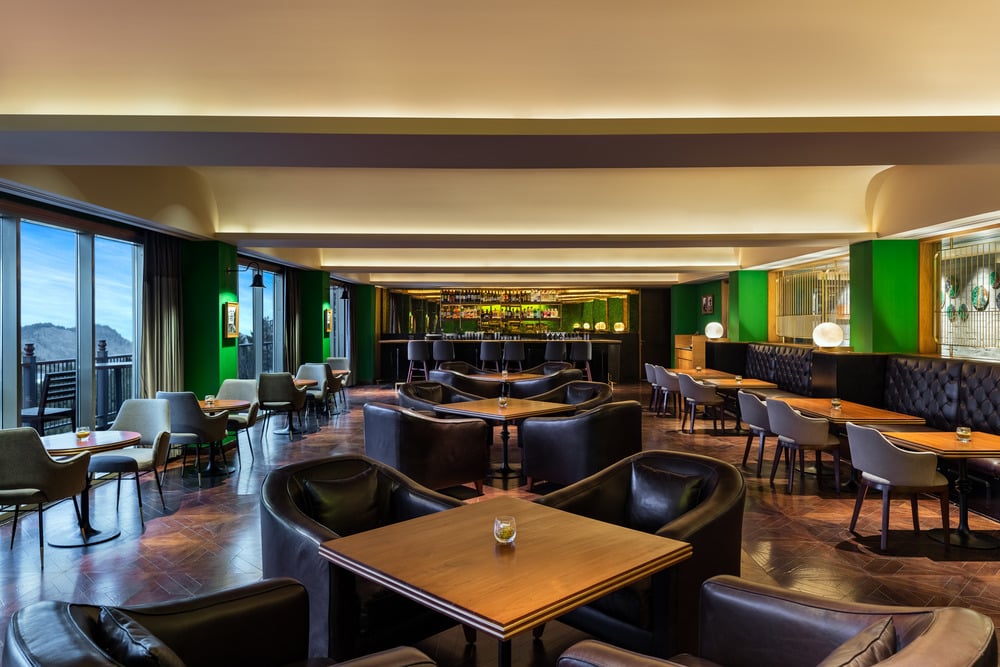 In a similar vein, leisure zones at the lower levels, including the spa, salon, and gym, feature artworks and storytelling devices to create a sense of place for each facility. A central contemplative kund-like water body greets visitors at the entrance to the zone; beyond, the corridors that lead to the treatment rooms are dotted with specially-commissioned illustrations of local flora and fauna, and display cases with pressed and preserved flowers collected from around the site.
In a similar vein, leisure zones at the lower levels, including the spa, salon, and gym, feature artworks and storytelling devices to create a sense of place for each facility. A central contemplative kund-like water body greets visitors at the entrance to the zone; beyond, the corridors that lead to the treatment rooms are dotted with specially-commissioned illustrations of local flora and fauna, and display cases with pressed and preserved flowers collected from around the site.
Moreover, the stone-and-timber vocabulary extends into the circulation spaces of the hotel; through the strategic usage of deodar wood as well as hand-carved motifs referencing the art and culture of Himachal Pradesh, the design scheme evokes a sense of continuity as guests move through the spaces.
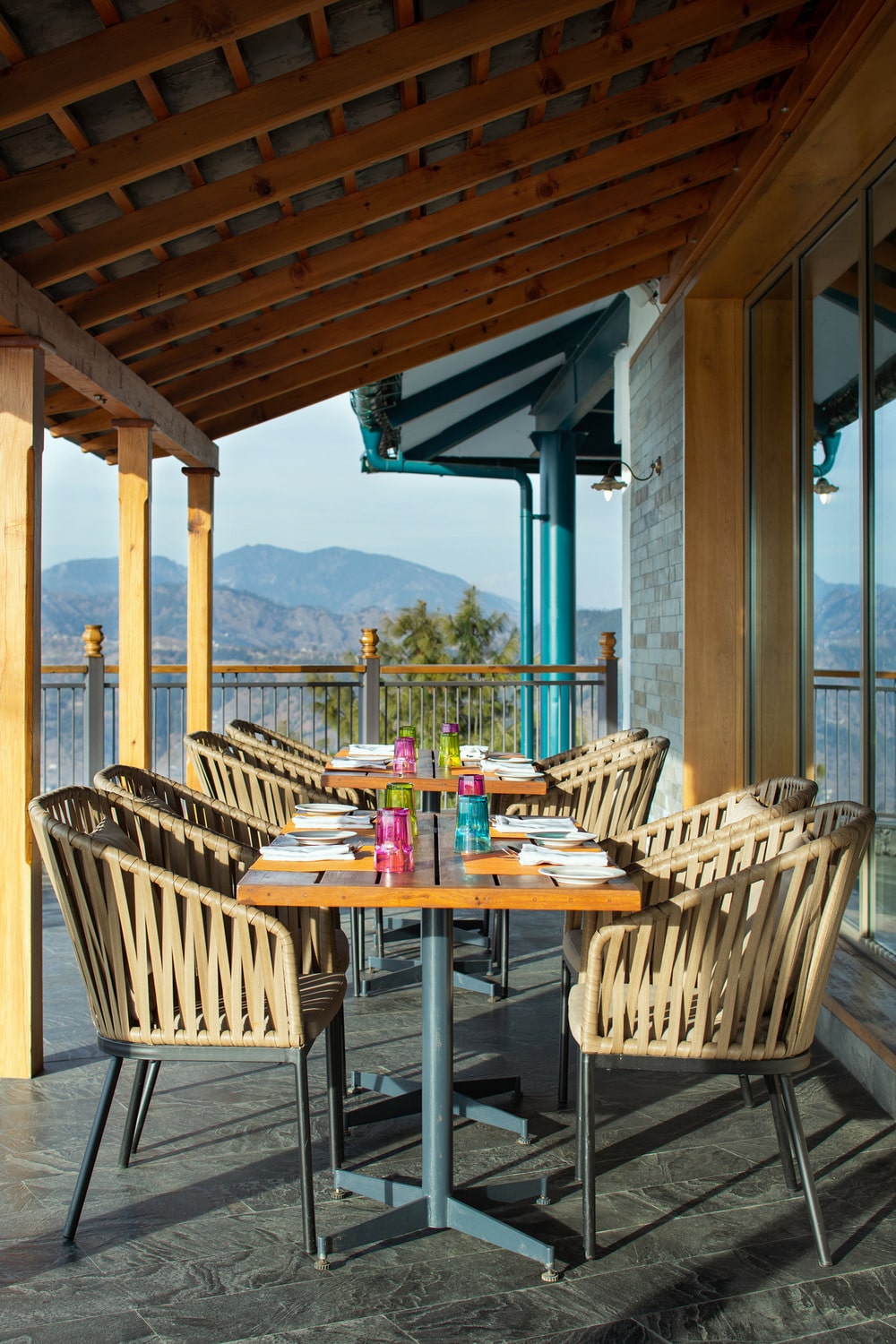 Ankur Choksi, principal at Studio Lotus, says: “Overall, even with the narrative of the local stories woven in, the broad stance of the interior scheme is to provide a neutral, evocative backdrop for the hotel’s team to enhance the everyday experience of their clientele using their core values of service and attention to personal needs. The design intervention only attempts to substantiate this sense of luxury that gets created by the experience of being truly taken care of.”
Ankur Choksi, principal at Studio Lotus, says: “Overall, even with the narrative of the local stories woven in, the broad stance of the interior scheme is to provide a neutral, evocative backdrop for the hotel’s team to enhance the everyday experience of their clientele using their core values of service and attention to personal needs. The design intervention only attempts to substantiate this sense of luxury that gets created by the experience of being truly taken care of.”
Picture credit: Taj Theog & Noughts and Crosses




